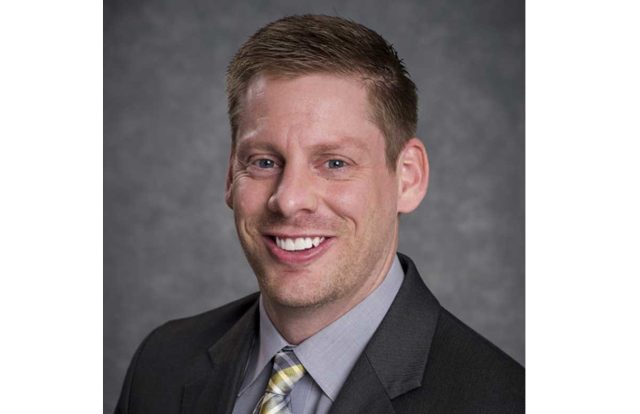By Keisa Sharpe-Jefferson
The Birmingham Times
Thomas Buford, Ph.D., researcher with the UAB Division of Gerontology, Geriatrics and Palliative Care, can’t be more direct: “There’s no intervention to my knowledge that has as many different and consistent beneficial effects on overall health as exercise. For older adults in particular, it has a tremendous impact on health and quality of life.”
With the start of a new year Buford said it may be time for a fresh take for how older adults incorporate exercise into their lives.
Rather than “doing” more stretches and “putting” in more work on the machines, daily, healthy living and consistent activity should be the overarching goal, he said.
“In the U.S. we talk about (how) I had a great workout, or I really exercised hard,” he said. “Whereas in Europe, it’s more built into the lifestyle, so if you went out and were really active throughout the day, you would say ‘I had a great day.’ It’s integrated as part of your life and not this thing you have to add onto life.”
And rather than feeling pressure to run a marathon right now, Buford advises you “start slow and build up as you can.” And adds that the type of exercise isn’t as important as the commitment to do it regularly.
And if weight loss or a health diagnosis aren’t enough to motivate you, then “what we really talk to people about is that it’s (exercise) without a doubt the best-known way to make sure you continue to do the activities you enjoy doing in your later years.”
He suggests you exercise to maintain mobility – whether it’s playing with grandkids or working outside in your garden.
And that’s not all. “Physical activity and exercise are the number one way to preserve brain health in your latter years,” he said.
Exercising Your Options
While gyms are exceedingly popular, they certainly aren’t the only choice for healthy exercise regimens for seniors.
Buford advises seniors tailor a plan that best suits their lives.
“Any amount that you are going to do in any form is good for you,” he said.
And the key is “find something that you enjoy doing to help keep you moving and active and integrate those at whatever level that you can and hopefully, over time, increase as it becomes easier.”
He pointed to medical guidelines that often break down exercise goals by the numbers.
“Oftentimes … we talk about our 10,000 steps kind of thing or the 150 minutes per week,” said the doctor. “Our policies and guidelines are built around evidence we’ve seen, but sometimes it’s a discouragement to people because they say, “Well, I can’t do that.”
So, rather than allowing that to discourage you, you should “really be saying what can you do to build that into your life in a way that’s meaningful to you,” he said.
He gives some examples – like being outdoors in nature or indoors in a group activity with friends.
And more specifically, Buford says there are four key elements that should be incorporated in your routine: aerobic, strength, flexibility and balance exercises should be included whether in a gym, your home or outside in nature.
And as always, first consult with your health care provider before beginning to get guidance on your specific health condition.
“Beyond that, it’s the encouragement that it doesn’t matter where you start,” said Buford. “If you’re doing nothing now, wherever you start is a step beyond that.”
A Case for Creative Solutions
Buford directs the UAB Center for Exercise Medicine which researches the effects of exercise with all aspects of improving quality of life and “ways to enhance the efficacy of exercise for improving health and quality of life for older adults.”
Regardless of age, medical evidence overwhelmingly shows exercise provides significant health benefits.
According to the Center for Disease Control and Prevention, non-institutionalized adults over 50 account for $860 billion annually in health care costs and even more staggering, four of the five most costly, chronic health conditions in adults 50 and older can be managed or prevented altogether with a regular exercise routine.
The goal of health care providers is to not only work with each individual to find out what’s going to work for them, but also find resources to help increase access to exercise options, said Buford.
“There are programs like SilverSneakers, which can often work with Medicare and are fitness programs, offered at no additional cost to seniors on eligible Medicare plans, help them get active and connect through access to gyms, on-demand videos or online classes.
“Or, there are churches in the community here and they can have facilities where people can walk.”
Still there are other creative workout solutions for older adults. Buford said his grandparents walked in the mall because space, safety, weather, and finances nor access were ever an issue with this venue.
And, with modern advances like smart watches, computers and tablets, seniors can exercise without ever leaving their home. Buford refers to his Garmin watch as his exercise companion.
“Technology is increasingly becoming a part of our lifestyle so whether it’s physical activity or diet changes…. there are various apps which are designed to support you with behavioral reinforcement.”
But to see any success, you must take the first step, he said.
“Any small amount of activity [seniors] can do is going to be beneficial to their health. I’ve seen over and over people who have been sedentary and started engaging in exercise say, “You know I feel so much better. I wish I’d started doing this sooner.”
For more information on exercise guidelines for seniors, visit http://www.cdc.gov or www.silversneakers.com.





